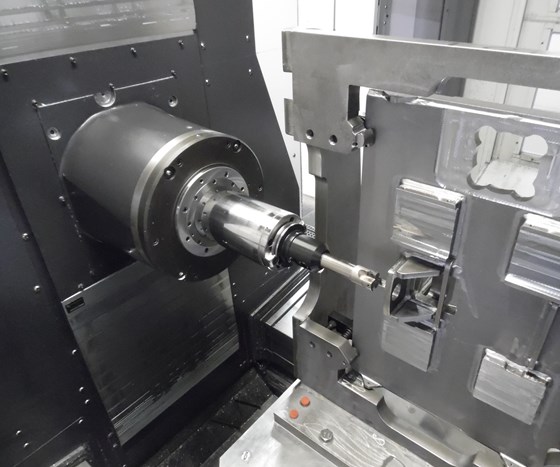What Machining Technologies Are Top Shops Using?
A variety of technologies used by leading job shops and captive operations alike are on display at IMTS this year.
Each year, Modern Machine Shop magazine offers its Top Shops benchmarking survey to job shops, contract shops and captive machine shops of all types and sizes. (The majority of participating companies continue to be job shops and contract shops.) Many of the shops in the survey’s top-20-percent benchmarking group, which is calculated based on answers to select survey questions, use the machining technologies that are on display at IMTS. These machining technologies also will be highlighted in the Top Shops Workshop Thursday, September 13 in rooms W-375 E and D in the West Hall.
Past survey trends related to the types of machines successful shops cited using held true for this year’s survey, which was completed by 471 shops. For example, a higher percentage of successful shops use horizontal machining centers (64 percent compared to 51 percent of other surveyed shops), which can offer higher spindle uptime than vertical machining centers. A HMC’s dual-pallet design enables a new job to be set up on one pallet while machining is performed on the other pallet. Successful shops also perform four- and five-axis machining more often than other surveyed shops, minimizing the number of setups a job requires and enabling more complex, contoured geometries to be machined.
Leading shops also tend to adopt more sophisticated tooling technology and strategies compared to others. A higher percentage use custom/specialty tools, balanced tool assemblies and tools with internal coolant delivery. They also are more likely to use workholding equipment such as quick-change devices, vacuum chucks and tombstones to maximize spindle utilization.
The use of additive manufacturing and 3D-printing equipment is still relatively low for all surveyed shops. However, it is seeing increased use not only for creating prototypes, but also for quickly and sometimes less expensively creating jigs, fixtures and related workholding components as opposed to machining them.
A rather low percentage of benchmarking-group shops use machine-tending robots (23 percent compared to 17 for others this year). However, 59 percent of them (compared to 42 percent of others) still realize the advantages of unattended machining, which is possible even without a robot. This is accomplished by using equipment such as bar pullers and bar feeders on turning centers, parts-collection devices, fixturing to accommodate multiple workpieces and HMCs with pallet pools.
Similarly, there are various other ways shops achieve automation. Five-axis machining, which provides access to five sides of a part, is a form of automation. It can minimize the number of setups, the number of machines that a part might otherwise have to run across and, thus, the number of times a part is “touched” during production (i.e., it’s “automation”). On-machine touch probes can identify the location of several points on the part or workholding device to establish the part’s exact location on the machine. The machine’s CNC then automatically adjusts the native work coordinate system to match it. In addition, on-machine tool measuring probes can automatically determine tool offsets and check for tool breakage.




